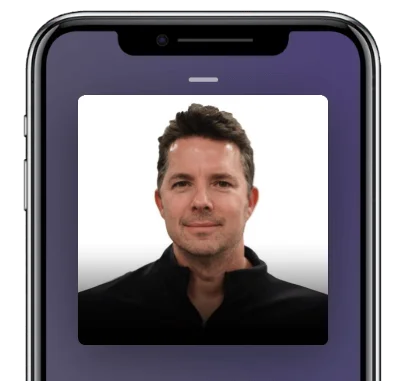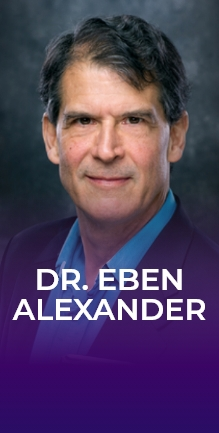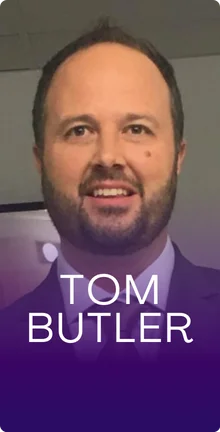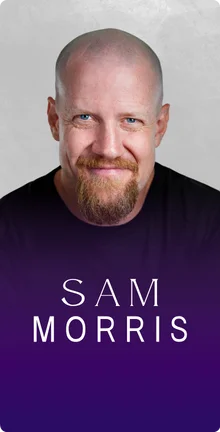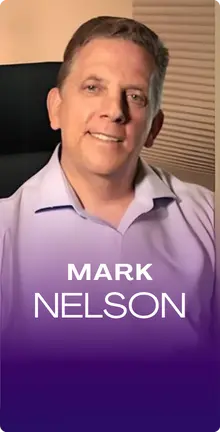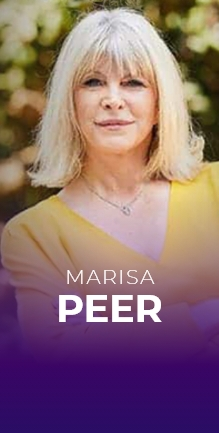In this Episode
- [00:39]Stephan introduces Sean Entin. His insatiable enthusiasm for life and helping others is rooted in the fact that he overcame insurmountable odds to survive & thrive after his stroke.
- [04:09]Sean discusses how he used to train Jiu-jitsu with his friends from the SEAL teams.
- [08:35]Sean tells the story of when he felt severe pain like he was going to die while he was in the ER with his neurosurgeon.
- [12:26]Sean talks about the neurosurgeon’s decision on performing craniectomy for treating his brain condition.
- [16:08]Sean speaks about firing his first neuro psychiatrist after telling him words he strongly disagreed on.
- [21:29]Stephan asks how Sean transitioned into learning biohacking techniques that made an impact on his life.
- [26:41]Sean talks about Dr. Jason Wersland, founder and chief wellness officer of Therabody.
- [31:00]Sean shares a very meaningful conversation he had with Sam Morris talking about their life experiences.
- [35:51]Sean talks about how Mark Nelson, a world-renowned psychic, helped him to understand more about his psychic abilities.
- [41:40]Visit Sean Entin’s website at SeanEntin.com to check out his podcast, Adventures in Health, and learn more about his inspiring story.
I’m excited to have you on the show, Sean.
Thank you, Stephan. Thank you so much. It’s a pleasure to speak with you. It’s always so much fun.
First of all, let’s start with where everything went sideways for you. You were a chief marketing officer and a serial entrepreneur and everything. And then everything got derailed this one day when you had your stroke, so maybe you could share some of that story.
Of course. I’ve lived two lives. I’m 49 now, I lived a life 39 and younger, and then I lived a life after 39. So what happened to me before the 39, I lived in San Diego, and the water had taken two companies with the team and people from private to public. They were in two different sectors. One was a company where Shaquille O’Neal was a partner. And another one was Greenhouse Holdings, which was a company that makes things a lot more sustainable. So I took people off the grid, whether it was solar, different energy efficiencies, built up a company there. And then living in San Diego, the world was perfect for me. I was married at the time, I have two young kids; they were 14 months at a time and four years old. And I become friends with the local Navy SEALs. And I always had a huge heart and affinity and such an attraction to what they do. I met the teams there called the teams on the west coast, Seal Team 7, particularly that they had real trouble integrating from the military life into civilian life. So they all want to be entrepreneurs. So me being an entrepreneur, this was easy. I was like I’m giving back. “Come on over. Let’s all hang out. Teach me about what’s going on in your world.” When I realized that the government spent $8 million on the SEALs. $8 million from boots to combat. But what happens is that when they go overseas, and they’re like mercenaries, and they’re protecting our kids over here, they come back, and they’re civilians. They have no idea what to do.
I can, I shall, I will. Share on XI didn’t understand what PTSD was. I didn’t understand what brain injury was and what all these guys will go through and all the training exercises. Also, what it takes to lose a brother or sister in combat and to see the amount of death and everything else. So I would start spending some time with them. And they want to learn hand-to-hand combat, and so I have a good friend in San Diego. His name is Dan Henderson, who was at the time, the number one ultimate fighter on the planet in the MMA world, in the UFC and Strikeforce. Dan Henderson says, “Yeah, come over to the gym.” Because what the Navy doesn’t want these SEALs to do is they don’t want them to give them three feet of their opponent. So they do not want them having any hand-to-hand combat. Very minimal, they want them to be a sniper, collect intel, report it back to the Pentagon and the CIA–get in and get out. And these guys were like junkies for hand-to-hand combat.
Here I am at 39, training with these guys, who are in their 20s.
One day, while rolling with them–I’m a civilian and an amateur mixed martial artist–I was wrestling with them in one of our classrooms. We were doing some basic moves in jiu-jitsu. You always come back, you banged up, I was very healthy. My cardio was way up there. Here I am at 39, training with these guys, who are in their 20s, who are Abercrombie and Fitch models, who were the peak of the best of the best, and they would be around all these other special tier-one operators, whether it was from the rangers, the green berets, the MARSOC’s, even the Israeli, the British. They were always surrounding themselves with the best of the best. So I loved hanging out and spending time with them. One day I was rolling in jiu-jitsu, and I got caught in a submission or choke. It is a routine exercise to get you to get submitted, or you get choked out, no big deal. So I got choked out. I came home that night, and I said to my wife at the time, “My throat is killing me. Something’s going on with my throat.” I didn’t know what it was. Being as fit as I was, I was like, “Oh, it’s just a scratch. It’s a scrape. It’s a bruise. It’ll go away. Maybe I have a swollen gland. Who cares whatever is going on.” I kept having this pain here on the right side of my neck. So I go along with my routine. I’m raising money on Wall Street. I’m traveling the United States, and I think I may have even jumped to Mexico and gone down to the Dominican Republic. I was traveling for businesses. I was the Chief Marketing Officer of the company that I began, and I was just living the life. I mean, we live next to SeaWorld, which is a waterpark, and one kid was on my shoulders, and one kid on my chest. And things were great, Stephan.
And then we go away to San Luis Obispo for Thanksgiving, which is ten years this month coming up on Black Friday, we went up for Thanksgiving in San Luis Obispo to hang out with a friend of ours. The following day after Thanksgiving, I woke up and I was like, “I’m not feeling good. Like maybe it’s just too much wine?” And I’m like, “Maybe I’m just hungover.” But I didn’t even drink that much. Then I tried to stand up. I started to feel shaky. I go look in the mirror in the bathroom. And my face is ash gray; the left side of my face is drooping down. I couldn’t lift my left arm. I put my right hand in front of me and couldn’t even see my hand. All of a sudden, no kidding, I see my soul leaving my body. It’s like an out of body experience where I’m watching this, and I said to my ex, Stephanie, “Call my dad. He’s a doctor. I think I’m dying.” And my dad evaluates and says, “Call the paramedics right now. My son’s having a stroke.” And my speech at that time was going down. All she heard was inaudible sounds. I couldn’t even talk. I’m trying to talk, and next thing you know, the paramedics showed up. And I think I’m talking to everybody, but all they hear is inaudible sound. And here I am thinking I can talk, but nothing’s going on.
I remember waking up, and I couldn’t speak. All I knew something was going on with me. And I said, “I think I’m just dying. I think I’m just gonna go.”
And it turns out that they take me to one hospital. That hospital was way too small for what needed to be done. They couldn’t evaluate me because I’m in such great shape. They’re like, “Is your husband on anything? Is he on any kind of drugs? What’s going on?” I was supposed to go run a 5K that morning for a charity event for Thanksgiving in San Luis Obispo just to give back. And I got in the hospital, and the ER doctor said, “I can’t help him. We gotta get him down to Santa Barbara because there’s a neurosurgeon in town that needs to get a hold of him because something’s going on with his brain.” And I was coming in out of consciousness. The next thing I know, they’re transporting me to a helicopter where they’re taking me to a hospital in Santa Barbara, which is probably about an hour and a half to two-hour ride from San Luis Obispo in California to Santa Barbara. I remember waking up kind of going into a whole new facility, and I couldn’t speak. All I knew something was going on with me. And I said, “I think I’m just dying. I think I’m just gonna go.” The pain was just so bad. I felt like someone’s putting a vise on my head. A neurosurgeon named Dr. Alois Zauner happens to be in the ER on a Black Friday, ready for me. Because if I had a stroke in Los Angeles, there’s no one around taking care of us. There’s maybe one or two doctors, and I probably say in the country who could have done what they could have done. So he runs me through a series of tests and figures out that my carotid artery is dissected so badly that it was that of a gunshot wound or a knife wound to my carotid artery. So it had dissected, sending out clots to my brain. So clots are going up to my brain, stopping the blood flow in the oxygen going into my brain, which means I’m dying. The brain is playing tricks on me, and something’s about to happen here.
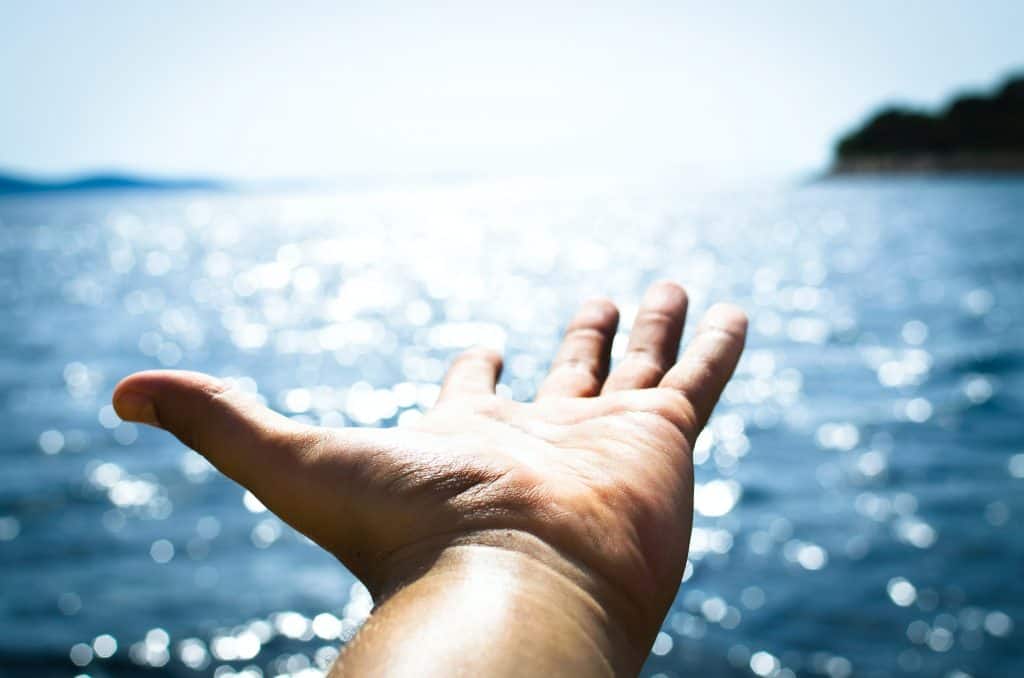
So he evaluates me, and immediately he says to my wife, “I need you to sign these papers right now, or your husband’s going to pass away within moments.” My dad’s coming in from LA to Santa Barbara. And he gets there as I’m wheeling into the operating room. And Stephanie was like, “I gotta wait for Sean’s father to show up. He’s a surgeon.” And the neurosurgeon said, “I don’t have time to wait for anybody. I gotta get in right now and do what I’m going to do.” So he did a procedure that wasn’t even FDA approved. He put a catheter through my hip, all the way up my side of my body, put a shunt into my carotid artery, and stopped the clotting from going into my brain. That was the first thing he did. So he did that procedure first. And I’m coming in and out of consciousness. I don’t remember much. I remember being naked on a table, freezing, and seeing this man’s head pop up in between my legs. And I’m like someone tells me something’s not right here. So that starts happening, then they decide to try to freeze me because my brain is swelling so badly that it’s coming out of my skull, it’s falling in the backside of my head because the pressures are too much to handle. Because there were clots going on, and the circulation, blood, and oxygen were not able to survive. So it’s all getting all blocked up like a dam of energy not being able to get to the brain. And the brain, as you know, runs the whole nervous system of the body. It’s like the brain of a computer, the CPU. So it’s frying. So they tried to freeze me but that didn’t work. They threw a shunt in my carotid artery. Then I’m coming in and out of consciousness.
I didn’t understand what was going on because I was so numbed up. But what they were doing was they were doing a craniectomy.
A couple of days later, I’m not responding that much. Finally, my dad comes in, or my best friend comes in. I forgot who it was and says, “You’re gonna go to sleep for ten days.” And I’m like, “I’m going to sleep?” and they said, “We have to put you in a coma.” I’m like, “I don’t want to go into a coma. I want to go work out. I want my kids,” but I couldn’t speak. So then they induced a coma, which was 10-full days. And they’re hoping to regulate my swelling in my brain. But at the time, they were running all these tests on me, and they didn’t know what was gonna happen. So they ran it for ten days, I was induced into a coma for ten days. Usually, after about that much time, they put a trach in you. Well, they end up traching me because I remember in those ten days and the kind of subject here. I actually crossed over and saw the light and then came back. So I played on the other side for ten days. When I woke up, the first time I woke up was on the operating table face down. And I remember them talking, and I remember the light coming off the outside of my face, and a suture had dropped. And I didn’t understand why and what was going on because I was so numbed up. But what they were doing was they were doing a craniectomy. It’s when they took a piece of the skull off my head, and they had, it this whole piece came off. They usually put it in a jar to freeze it, and not knowing what’s gonna go on. But this neurosurgeon said, “This guy is young enough, and he’s in great shape that I’m gonna put it in his abdomen stored there, and I’m gonna put it back on his head in a couple of days.” I know this sounds crazy. Hearing me talking about this sounds nuts.
When I woke up from a coma, my feet were killing me like I’d been running miles and miles and miles, but what I was doing was traveling the world on another surreal experience.
So I woke up the first time on the OR table, and they put me back to sleep. Then I remember them waking me up from the coma. Interestingly enough, they decided to do my brain on the right side, so the left side of my body is now paralyzed and weak. They’re able to set me up, and I’m not able to speak much because everything is just being my CPU. My brain and my body are all fried up. So I had enough speech in there to say because I haven’t had any food or anything in ten days, I said, “I’m hungry, I need water.” They couldn’t do anything like that to me, because they had to make sure I could swallow. So they’d run a series of tests on me. The tracheotomy didn’t come. They’re about to put the scalpel into my throat. And I grabbed the guy’s hand with the scalpel and said, “We’re not doing this.” They had already put two feeding tubes in me because I went from 175 pounds to 135 pounds in 10 days. I lost that 30 pounds of muscle because I was that well built and in that much shape. And then I came conscious and I said to my dad, I had a helmet on my head, I said, “What happened?” He goes, “You’re paralyzed. You’re paraplegic.” I said, “What is that?” He goes, “The left side of your body doesn’t work.” And the neurosurgeon came back into the room and said, “I’m initiating therapy right now, we have memory, we have speaking part of the brain. Everything is regulating. And the back of the brain where the speech is going on is still intact.” Because most people have pretty bad aphasia. My aphasia was so bad, but it came back much sooner.
So here I am, in the ICU, thinking to myself going, because I didn’t know where I was or what the hell was happening, all I know is that I was in pain. And when I woke up from a coma, my feet were killing me like I’d been running miles and miles and miles, but I was doing was traveling the world on a whole another surreal experience to wake up, and now they’re telling me that you’re paralyzed. I start scratching my abdomen. I’m like, “Why is this itching?” and they go, “Your skull is in your abdomen.” I said, “My brains are in my belly? This doesn’t make any sense.” And then I was there for about November the 25th until January the 5th, which is my 40th birthday in Santa Barbara. And then they moved me from Santa Barbara back to San Diego for inpatient rehab.
Unless you've been through trauma and pain, you don't understand life. Share on XWow.
So that’s just the first part. So really, where the story will get interesting is I get moved down to San Diego. And then again, I’m thinking, “Oh, I can get back into my yoga, I can get back to my running, throw some weights in front of me, I’m gonna get back to the mountains, keep doing some jujitsu.” But not realizing that I have no left side, my speech is terrible. So imagine getting cut straight in half. I couldn’t hear, I couldn’t see, nothing’s working at all. And I had to reboot and reprogram everything all over again. So they put me into an inpatient rehab in San Diego, where I live, post-acute it’s called. I lived there for about, I probably say for about three months, from January 5th till about April of 2012. That was tough because you go from being independent to be dependent. And the first neuropsychiatrist got a hold of me, said to me, “You got brain damage, you may never walk again. You’re never going to drive, and you’re never gonna get back to work. And don’t count on your speech coming back.” And I said, “You’re fired.” And she says, “What?” I said, “You’re fired. Don’t ever tell me I can’t do anything.” And the saying behind me is that “I can, I shall, I will.” And I kind of said, “Get me a team of people in here right now. That tells me I can do anything because I don’t believe in the word “I can’t.” I don’t believe in the impossible. I believe in the possible.” And that journey there was very tough because I had to learn how to eat. I had to learn how to use the bathroom, I had to learn how to regain just walking. Because I was in the chair. I wheeled around that hospital non-stop.
Don’t ever tell me I can’t do anything. I can, I shall, I will.
That Bootcamp was literally from five-thirty in the morning to eight o’clock at night. But I can only go for so much time like I could go for 45 minutes at a time, and then I’d have to take a break because the brain needs time to heal and rest. So challenging times for anybody and then a series of events. I was at inpatient rehab for about three months then, then I was taken back home when I was initiated into some more therapy, the home health, which they taught me how to get acclimated back to my house because I couldn’t walk steps. I didn’t know how to use the toilet myself. I had to relearn everything. So here I am with my ex-wife at the time. I’m 39, an adult male in diapers being dependent on her. We had to get a caregiver and two little girls who don’t understand what’s happened to their dad. The hardest point was just not being able to hold my loved one and hold my daughters, change the diapers. I was always running and going, running, and taking them to the zoo. We were on the beach, we’d be in the water. I was very active, and here I am going through severe pain. And then, in the inpatient rehab, they told me, “If you want to get into the gym and start to work out your physical side,” because I knew I had to get my physical body back. They told me I had to get off on my pain meds, and I had to get disconnected from every single cord. So I had two feeding tubes in me, I had a PICC line in me, I had 20 sutures on me.
What I did in inpatient rehab, I started pulling out my tube. They said, “You can’t go off. You’re on pain medication because you’re gonna go into withdrawals.” Because I was on so much Dilaudid, morphine, and all these drugs, which were needed plus, now top on the anti-anxiety pills and the Klonopin, Xanax, and the Zoloft. Everything imaginable, and they had to do what they had to do to calm me down, and I get that. But I wasn’t really happy being in that world because I didn’t live on that Western side. What the surgeons and the doctors did, they saved my life. And then I lived in San Diego, I was a breadwinner. We couldn’t support our lifestyle, because it’s all about my kids and my wife at the time. And here I am running two companies being the CMO, being the spokesperson, being the promoter, and I’m having trouble speaking, I’m having trouble adding and just doing simple, basic, everything and being independent. So then I went back into what’s called an outpatient rehab, where I went every day again, which was exhausting. Because I was so mentally tired all the time. And then I met a lot of these people that circles back to the military. I met a Marine who was blown up by an IED. I was always crying and depressed about myself. But when I met this marine who I took love to, he had no left arm and no left leg, and he was young and had a wife and kid at home. And here he was, I came back into outpatient rehab. That following week, this marine has gone, and I said to my therapist, “Why is this marine gone?” and they go, “Well, he got discharged because they think he’s capable of being on his own.” And I’m like, “Then why in hell am I here?” They said, “Well, you have insurance, and you have money.” And I’m like, “Our military is sending this guy home because they think he’s ready. He’s never gonna make it. He’s gonna end up taking his own life or taking his wife or his kid.” And that’s when I started to have a heart and started to realize and snap out of my own sh*t, not worried about why me, it’s about what’s next.
But I also realized that it was about mindset to me. It was depressing. Suicide was there.
So that’s when I started to see, “Wait a second here. I have the fortune, I have the gratitude and the luck to have money and have insurance. But our military won’t take care of our veterans.” And I saw a lot of this happening in these places. We have a place that people let go early because they only gave me 100 hours of physical therapy. What do 100 hours gonna do for me to learn to walk? I mean, it takes thousands of hours. And I was so determined that I remembered in outpatient therapy, I grabbed a pole, and I finally got the courage to take my first step. And I remember saying, “I can, I shall, I will.” And that’s what got me from a walker to a cane to a stick to a three-point. And that’s when I started walking and then I wouldn’t stop. So I kept going, going, going, and going. But I also realized that it was about a mindset to me. But the mindset was not clear, Stephan. I was in no way, shape, or form to be back home with my family. I couldn’t stand light. I couldn’t stand sound, I couldn’t be around anybody. It was depressing. Suicide was there, I was trying to take myself off the cliffs if I could. I live on something called the Sunset Cliffs in San Diego. And I was really sad. I tried to come back too soon, I wasn’t resting enough. And I just did not understand the dynamics of the brain injury and how to reboot the brain once this traumatic thing happens.

Wow. So you ended up learning some biohacking techniques that made a huge difference for you? How did that come about?
Okay, so this is the second part of my life. So, from 2010 until about now, I’ve been on a journey. I came back to Los Angeles, I had to move back in with my parents. I had to be separated from my wife and my children because I couldn’t even be around that much noise. I needed a place where I can be calm. My dad was retired, my mom was a stay-at-home-mom. And I couldn’t use the shower myself. I couldn’t use the toilet myself. I didn’t know how to do anything. And here I am, one-handed with a headache, a 24-hour day headache, and a sound and a throb but just kept saying to myself, it won’t quit and I didn’t know how to make it quit. And along that way, believe it or not, I found the journey of chiropractors, I found holistic healers, I found healers from New Zealand, I found healers from different parts of the United States that I would just flock to. And then I found the cannabis plant, which was CBD, which was the first thing and the first point of it. Okay, if I can replace one anti-anxiety pill and put that with a plant base, which is the cannabis on a CBD strain mixed with THC, how will I feel? So sort of micro-dosing myself really, with plant-based products. I cleaned up my diet, I knew I had to start doing all that. And then someone said to me, actually a gentleman from METal, his name was Ryan Coleman, and said, “I want you to post for 30 days straight on your recovery on Facebook Live.” And I’m like, “Why do you want me to do this?” He goes, “The world needs to know who you are. And I’m challenging you to do this right now.” And I was like, “I don’t want to do it.”
Only a few of us understand what it’s like to go through a brain injury and recover from it.
I started doing it. I had a couple of people watch me. The next thing you know, it’s up to 50. It’s up to hundreds, up to thousands. And I’m like people are not finding me in the hospital, and they’re reaching out to me saying “Hey, can you help us get through this?” And through all that, I started helping people just with their daily routine like, when to drive again, how to get back to work, how to meditate, certain things like, nutrition, supplements, food. What’s the difference between speech therapists, occupational therapists, physical therapists, and then how do you discover all that. And I’ve walked through, back before the COVID days, I’d go visit stroke centers and walk around. And a lot of times just helping out the families of the loved ones. Because to be honest, Stephan, God forbid, something happens to your wife or kids, you’re not gonna know what to do if there’s a brain injury, you’re gonna find me go “Sean, what do we do?” and then I’ll be able to lay it all out for you. Because there’s no one on the planet, except that a few of us understand what it’s like to go through a brain injury and to recover from it because most of the time, I’m one out of 6 billion people who lived to tell the story. It’s out of every 45 seconds, someone’s having a stroke, one out of every 30-seconds, someone’s having a brain injury or a concussion, and no one knows how to deal with it. And when you hit that and you hit the physical pain mixed in with the emotional pain, it causes some deep dark depression and causes some deep dark suicide thoughts and you just want to check out. You want to get the hell out of life.
So my journey through my adventure and meaning the kind of practice ended me up at Dave Asprey’s Bulletproof Labs in Santa Monica when I was invited down there through a CBS contact because they wanted to do a news piece on me. Because I have been on CNN, Fox, and ABC already and throughout the first week for the AAs and then the Angels in California for the baseball league. I went through them and I was able to handpick what worked for me. And a couple of things I found in there, like what I have behind me is LiveO2, I call it my oxygen chamber, that thing saved my life. It maxes your VO2. So what it does is it throws enough oxygen into the brain and in the body where things are not flowing. And if you put oxygen and get the circulation going and blood flow, you’re gonna move better, and you’re gonna move without pain. Because the body will get swollen, it’ll get lethargic, it’ll gain crap. And if things aren’t going to move, and you get stagnant or you get stale, then it’s all over. I created a nonprofit called the Move2Improve Foundation. Move2Improve, which was to help the veterans provide them and people who don’t have the money and the health insurance to get recovery. So I’ve decided to build my reboot center myself in my own house.
My goal is to get someone independent and get back to working or get back to doing whatever they enjoy as fast as possible.
So you’re looking at a few different things. But I’ve met a lot along the way, some fascinating people like Dr. Jason Wersland, who’s my chiropractor, he invented the Theragun, now is Therabody, this vibrating precursor can go anywhere on my body, and get me out of spasms and reduce the amount of tension or flow. So what I have a trainer do, is I get on that LiveO2 four times a week on a spin bike. And don’t get me wrong, when I first started on that spin bike, I couldn’t even get myself on the bike without falling off because my gait and my alignment was so off. Now I get on that thing and I used to be able to go for three minutes or five minutes, maybe 10 minutes at the most now I’m going for 25 to 30 minutes, four times a week. And then an RPM which is between about 100 to 150, which is a lot. And I see such results on small things like this and things behind me like red light therapies and other things that I’ve done. Because a neurologist is great, they’re gonna look at you. They’re gonna give you a prescription. An internist is wonderful; they check your blood levels, they’re gonna check to see your cholesterol, your white blood cell count, your red blood cell count.
This injury led me to my purpose. I know that my mission is far greater than it would ever have been had I not had the stroke. Share on XHelp get their serotonin levels up and get their dopamine up to get them a happy place again.
All that’s fine, but how are they going to physically help you to stand up, walk around, check your gait, check the orthotics in your shoes. Hey, wait a second. We can check your eyesight. Okay, your vision is not great on the left or the right. So I came up with a technique. If you put a patch on the good eye, and you walk around, don’t drive with it. You walk around with the patch on the good eye, it’s gonna force your left eye to do even more movement. It’s gonna cause the left eye then to step up. And it’s like certain things that I’ve done. I call hacking things. I converted the inside of my kitchen. Because if you think about Stephan, how do you cut a bagel? You grab it with one hand, and you slice it. How do you grab a toothbrush? You take one hand, you took the toothpaste into the toothbrush. That’s easy. It’s like how do you put on a shirt? How do you put on your pants? Have you been in your shoes? Yeah, they teach you all this stuff in basic therapy but a lot of people just get tired, they get anxiety. And my whole goal is to get someone independent as fast as possible, back to working or back to doing whatever that they enjoy. So I can get their serotonin levels up and get their dopamine up so I can get them a happy place again.
It’s funny that you’d mentioned LiveO2 because I had Tom Butler on this podcast a few years ago, after experiencing the LiveO2 at the Bulletproof Biohacking Conference. And they had the equipment there. And I was impressed by it. And the person who was doing the demo had gone through a severe car accident, and her prognosis was not good. It was terrible. And LiveO2 saved her life. She somehow discovered, I forget the story, but she was in that episode as well, for like 5-10 minutes telling her story and her experience. And wow, what an incredible biohacking technology that is life-saving.
Coming back to the second part of my life, I learned about compassion, kindness, and I met some incredible people along the way.
Well, thank you so much. It’s so great. I become friends with all the CEOs of all these companies. So Mark Squibb is the founder and inventor of the LiveO2, which I’ll connect you with as well. He should be on your podcast because you guys can geek out like crazy on that. He’s got so many things up his sleeves, but I have pulled on engineers and mad scientists say, “Hey, what do I need next? Because I’m never going to stop until I can help.” So people send me stuff here to my reboot center in my home because you can easily go in through any kind of injury and spend thousands. I spent probably a quarter of a million dollars on whether snake oil or other stuff because I want to get better. It’s like, someone said to me now they’re like, “What happened to all the money you had?” And I said, “Well, what’s the price to walk?” And they’re like, “Uhhhh.” “Yeah, exactly. The price to walk is priceless.” So I do whatever I had to do to walk again because I knew I could walk if I just took those first couple steps. And those first couple of steps were the hardest. I’ve done two 5Ks, I’ve done a 10K, I have a goal set to do a half marathon someday. Not right the second. But coming back to the second part of my life, I learned about compassion, kindness, I met some incredible people along the way. And my whole journey is just finding people with my show, is that there’s a hero inside of all of us. And unless you’ve been through the trauma and the pain, you don’t understand life.
Speaking of that, do you see this whole journey as a gift now? Are you feeling resentment over it? Where are you at with that?
That’s a great question. Sam Morris, who you know well, who comes every Tuesday to train with me, to get therapy done by one of my team members here. I had a conversation with Sam last Tuesday, it was the 21st anniversary of his accident. He had a full spinal cord injury. From the belly button down, he has nothing, zero, no sensation of anything. Where I can walk, I walk with a limp. I have a very weak side, left side, but I look at him, and I go, he’s amazing. And I said to Sam, “If you could go back in time, realize we’re not going to be friends. You won’t be friends with any of the people you are now, would you do it?” And I looked at him, he looked at me, and man to man, tears that came in our eyes together, we connected. And he’s like, “I can’t go back in time. All I can do is live in the now and be okay with being okay.” And I’m still learning that journey, Stephan. It’s ten years this month, and this month is still so hard for me. I wish I could tell you, but I’m not gonna ever lie. I’m raw and honest and brutal as it is. It’s some tough moments. I remember everything I was doing days and weeks before my stroke. I mean, whether it was climbing a mountain, whether it’s getting up at five-thirty or four-thirty in the morning, going to run with SEAL Team 7 in San Diego, or going fishing with my friends, or being able to go 6, 7, to 8 hours a day, which I’m still not able to do. I’m able to go 2-4 hours a day, and then I need a rest.
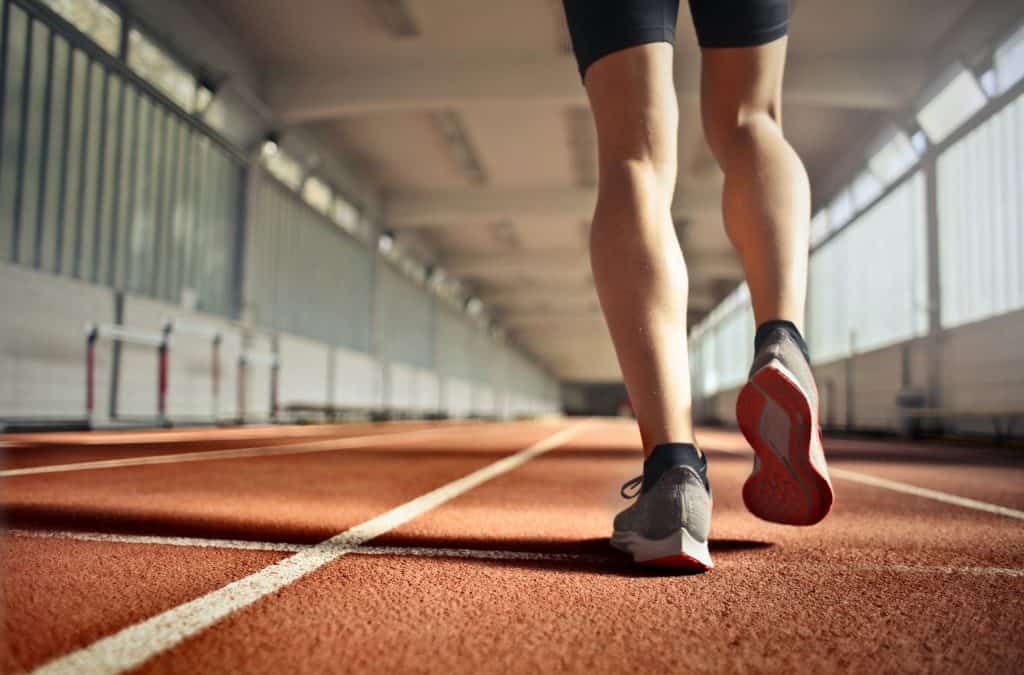
But what I do know is I’m able to help thousands of people and I have. And I know that my mission now is far greater than what it would ever have been had I not had the stroke. And that’s why I’ve got to create my materials and do what I’m doing and put it out there because people need it right now. The fact that people are killing themselves over a brain injury and over being a veteran or being first responders. I mean, we both have a mutual friend in METal and I won’t mention his name, who just retired as a captain. He said the biggest thing the fire department and the police department are hiding is the suicide rate of our first responders. That’s unacceptable to me. I’ve got to help these people out. And by putting them on the LiveO2. I’ve seen data for veterans. I saw this one guy whose name is Trey, who had severe PTSD. Go through a series of training with Mark Squibb, who’s the inventor of the LiveO2. And the video shows his three-year-old daughter coming on the video and says, “My daddy’s back! My daddy’s back!” And the wife saying on camera, “I was ready to leave him and divorce him because I couldn’t handle who he had become after the war.”
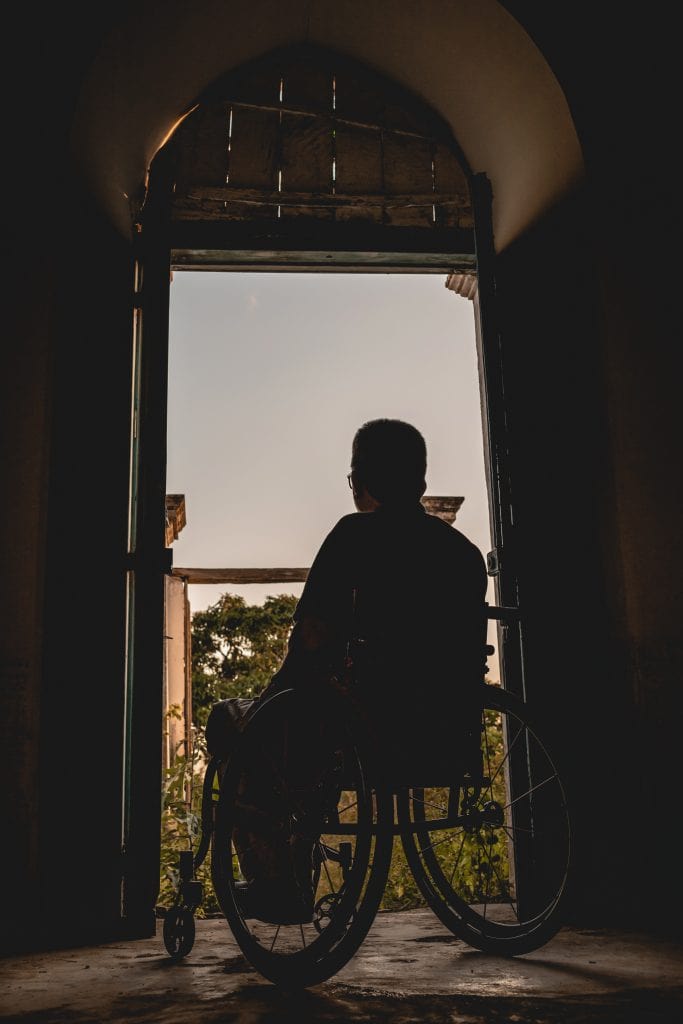
And it’s part of the journey is to save these people but to save them and provide them with a place of happiness and kindness. Because that’s what I think the world’s all about. And like I was sharing earlier with you. I think one of the biggest secrets is not just in our military, but the Israeli army. Everyone at 18 has to go into the military. They’re not given a choice. And just to go through the trauma of going through the boot camp is harder than going off to war. Because of the amount of combative training, the number of times someone can come out of a plane and lay on the ground. Get shocked and roll into position with a gun, your whole body’s feeling every time. How many times can you put C4 on a door? You breach into a house. Well, the first four guys of ten you breach into a house are all getting concussed. That amount of impact is hitting the brain. Everyone thinks a skull is surrounding the brain, but the brain lives in water. Every time the brain hits that side, it’s bruising, and those bruises turn into calcium deposits, which they would form CTE, which forms on these NFL guys who are not able to make it, hockey, any kind of contact sport. So it’s like, it’s one of these things where I know how to help heal people and guys like Dave Asprey and myself, even though Dave’s a little different, and I love what he does. Sam and I are pretty much the experts who can show people what to do. So that’s my mission really to show people and tell them, “Hey, I can, I shall, I will. Just keep moving, you’re gonna improve.”
Yeah. Sam was a guest on this podcast by the way. So I wanted to spend these last few minutes talking about your time of those ten days on the other side, and also the relationship that you have with Mark Nelson, who is also a guest on this podcast. He’s a medium and accessing the other side. He saved a family member’s life of mine. And I shared that in the episode. Could you share a bit about this?
Don't give up. Don't make excuses. And if you feel the world is turning upside down, things can only get better. Share on XOf course. I love Mark, he is one of my best friends. It’s so funny, you brought up Mark and his story. So this ties all in perfectly. So when I crossed over, and I played on the other side, I came back with certain gifts that I didn’t know how to use or didn’t know what they were doing. Because you understand the world that we live in now is the physical world. There’s a whole another plane out there of metaphysical, whatever people want to call it. But there is life after death, or there’s a place to go. And let me share with you a part of my coma, and this is why it ties into Mark. In my coma, I’m having a real tough time as you can imagine. My grandfather, who was my mom’s dad, who was my best friend growing up, my mentor, everything to me. We golf every Saturday; he was a very successful entrepreneur. He never said no to me in his life. He would have been 99 today, I think. He was in a golf cart, the golf cart I think is empty. And I said, “Pop, let me go golf with you.” And he goes, “No.” And I cried. I was like, “Pop, what do you mean I can’t?” And he goes, “You cannot go with me. You’re not going with me. You’re going to go back home.” And I said, “I don’t want to go back home. I want to go with you.” And he goes, “Not right now, Seanola” He used to call me Seanola. And he takes the golf cart, goes to the first tee, puts a ball down the first tee, takes out his golf club, swings his big head. The club hits the ball, and the ball goes up to this white light. As it goes in the white light, he starts to take the golf cart and drives off in the white light. And I feel his hands coming on me to take him with me. And he’s like protecting me and saying, “Now is not your time.”
When I get to know somebody, and they have that white light similar to mine, there is an energy that takes place that I want more of.Sean Entin
And as soon as he did that, I woke up from a coma. But there’s a whole other side of the coma that I will talk about another time. But that’s how I woke up. So a couple of years back or probably 13′ and 14′, I think I met Mark in 13′ and 14′, my mother who had raised me twice, once at birth and once again at 39 because I had to move back in with my parents because I had been separated from my kids and Stephanie at the time. Someone said to me, “You need to find a medium because things are happening.” And I was like, “Oh great. Where am I gonna find a medium?” But I ended up getting connected to Mark Nelson. Not only is Mark a world-renowned psychic, but he also lives a mile and a half away from me in Tarzana or Woodland Hills, which is adjacent to my town. And I go see him and he does a reading for me, and he says, “I see you on stage. I see your handwork. I see your fingers working. I see all this stuff. I see everything.” And Mark and I became friends after that. I was like, we need to hang out, we need to catch a movie, we need to grab a beer together. And he’s become such a wonderful friend and just a great soul. So he was able to help me understand the gifts that I have, because he has gifts, way beyond mine, but I’m able to tap into some of his. People called it “spidey senses,” I don’t know if you’ve ever been in a room, Stephan, and you’re walking around, and you’re like, “Oh, I don’t want to talk to that person over there.” I’ve always had a gift to know who I want.
Now I could relate to lightworkers and energy workers who are on the same level, and people who are like the real deal. When I get to know somebody in person, I have to feel them and get close to them. And we’ll have to connect, of course in person. But when I get to know somebody, and they have that white light similar to mine, there is an energy that just takes place that I want more of. And Mark is just one of those, and so is Sam, and a lot of you guys in METal. Some people don’t even know that they have gifts, and I don’t publicly talk about any of this stuff. If I hear somebody in public talking about their gifts, I’m like, “Just shut up. Because you don’t know what you’re talking about.” Because people who think they want to have something they usually don’t. It’s a small collective of us who know what we have, but we don’t talk about it. Because we don’t need to talk about it. Because we already know what we have. It’s like, why show off? Okay, so what? Come look at my Rolls Royce or my souped-up Tesla. I don’t care. I don’t need to own all this million dollars worth of stuff, it helps recovery, but I’d rather spend the money on helping someone walk again than buying myself a Tesla at this point. But everyone has their priority. So my goal with Mark is I want to build him his TV show because he’s health intuitive. And he was one of my hosts at one time for my show, for our show together. And he’s an amazing guy.
No one knows exactly how to deal with a brain injury or concussion. That being paired with the physical and emotional effects can lead to depression. Share on XHe’s a beautiful soul. Alright, so we’re out of time. So where do we send our listeners to learn more from you and maybe they could have somebody that they love or for themselves, get benefit from working with you? What website should we send them to?
You can go to SeanEntin.com, you can go to StrokeHacker.com. My podcast is called AdventuresInHealth.tv. But if you put Sean Entin and stroke, or Sean Entin stroke hacker, it’s gonna populate right to me. And my biggest thing is I tell everybody is don’t give up. Don’t make excuses. And if you feel the world is turning upside down, you can only get better. And if you plateau, there’s room to grow.
Beautiful. All right, well, thank you so much, Sean, thank you for your vulnerability and transparency and your heart and just all that you are in this plane of existence.

